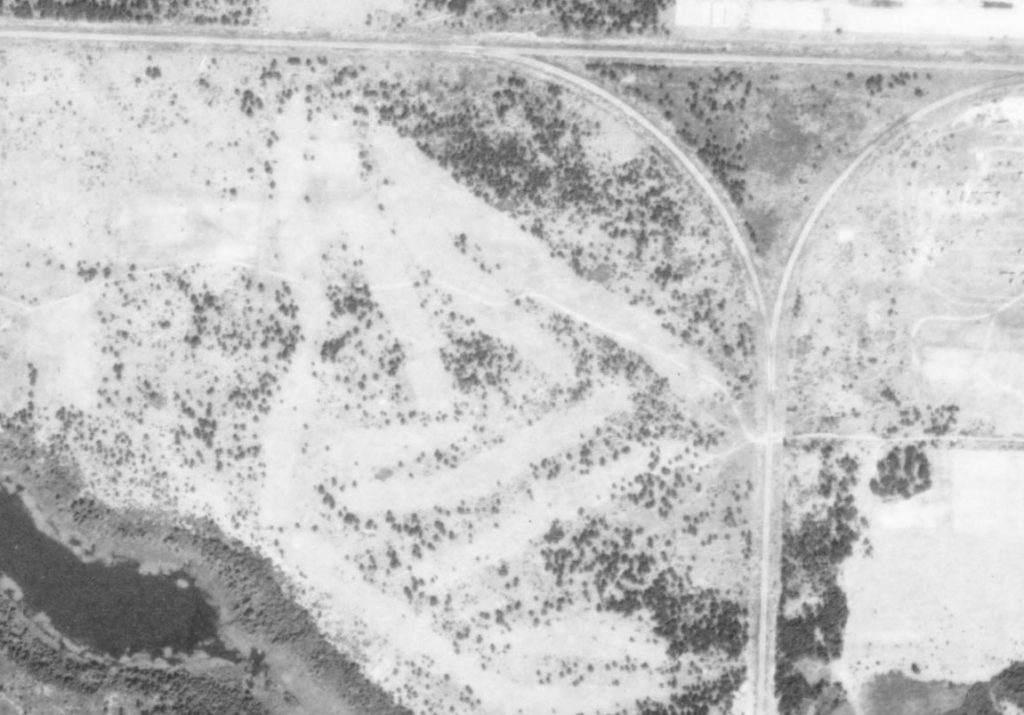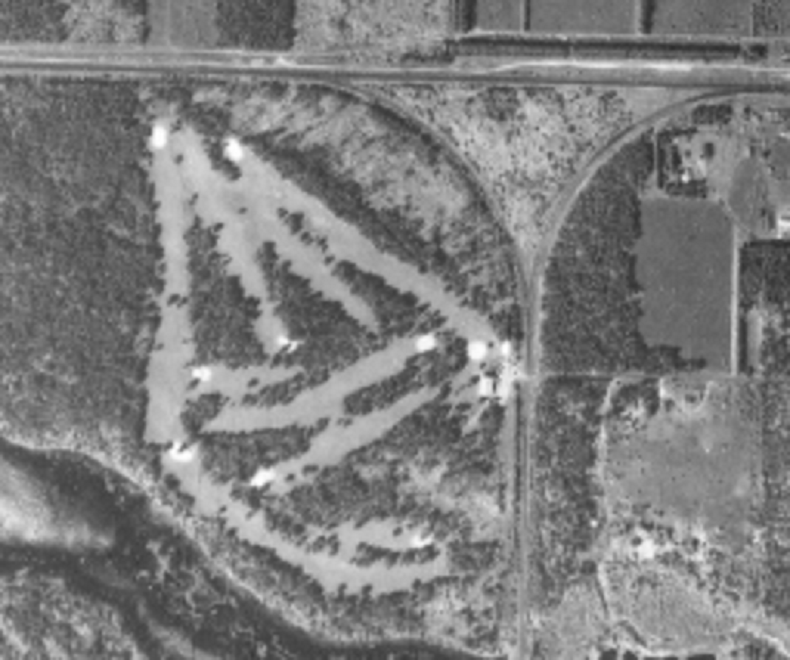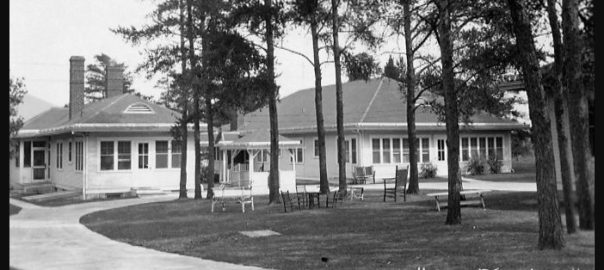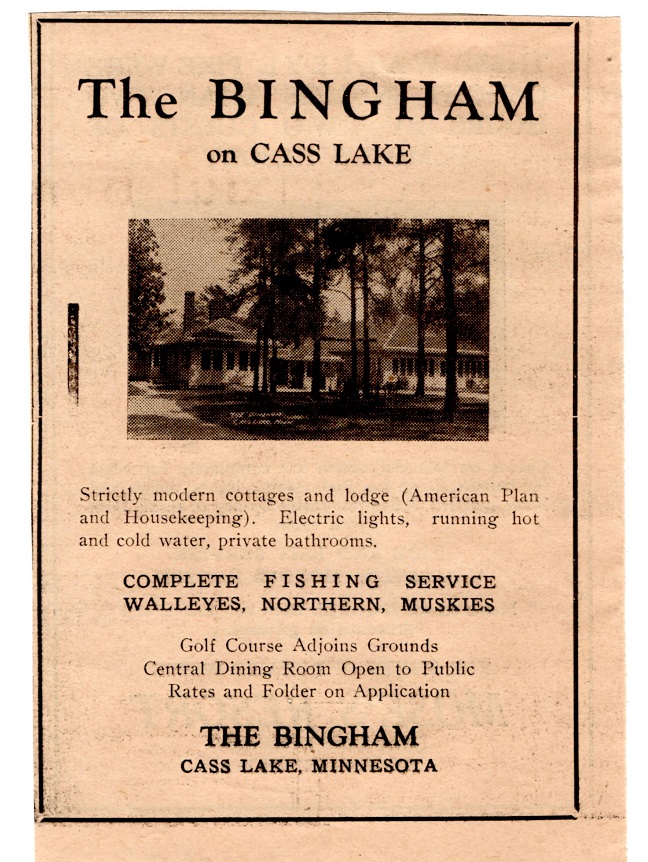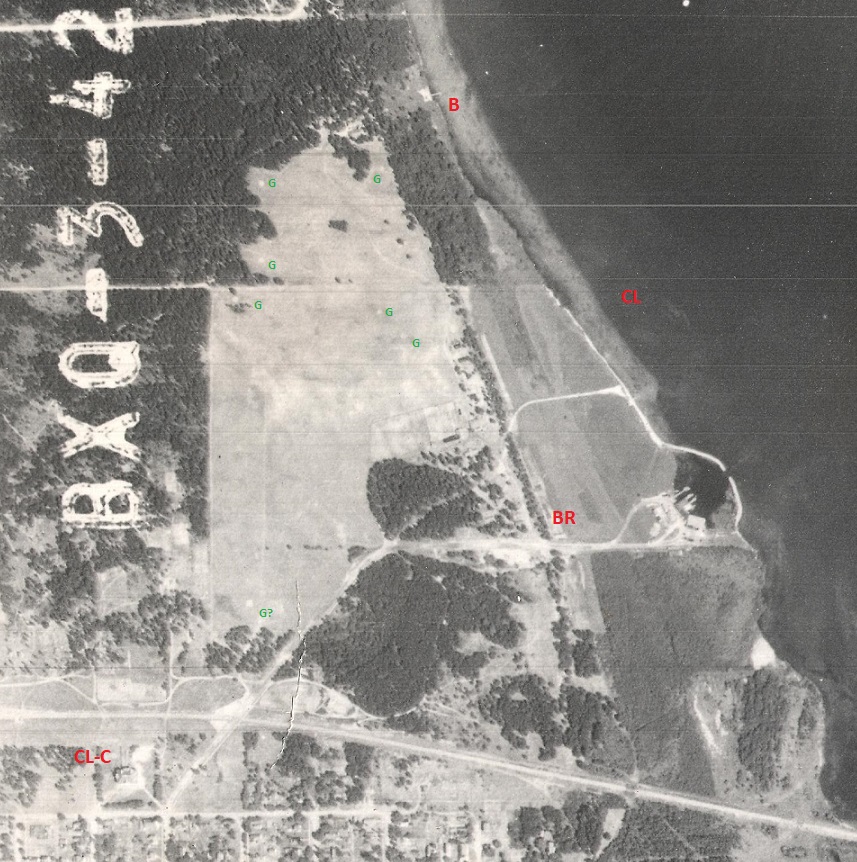The original Cass Lake Golf Club served golfers for about than a decade and a half in the 1920s and 1930s, not a bad run during an era in which scores of other small-town courses in Minnesota closed up shop.
At some point, however, the original CLGC situated partly on the Bingham Lodge land between downtown and the shore of Cass Lake ceased to exist, and the game was re-established a mile and a half to the southwest, on the other side of the city, on the site of what is now Sandtrap Golf Course.
But when?
At least two websites say Sandtrap (not its name in the course’s early years) was established in 1944. At least seven others say 1943. One, admittedly more business-oriented than golf-oriented, says 1983.
Not quite, not quite, and what weed from yonder gorse patch are you smoking?
Here is an aerial photo, dated 1939 and taken from the Minnesota DNR’s Landview service:
Yep, it’s a golf course. Modern-day Cass Lake golfers might recognize the lay of the land. It is Sandtrap Golf Course — or at least the 80-year-old version of it — a mile east of downtown. Except the photo dates to 1939, before the consensus purported opening of the course.
Here is what I came up with regarding the very earliest years of what is now Sandtrap Golf Course:
I don’t know whether the original Cass Lake Golf Club, on the Bingham site, flourished or floundered in the 1930s. I came across a few references indicating the course operated into the late 1930s, including a 1937 newspaper ad that said The Bingham still had a golf course adjoining it.
A headline in the Cass Lake Times of July 6, 1939, however, suggested that organized golf in Cass Lake went through a short period of dormancy in the late 1930s. And it pointed toward the future of golf in town.
“Golf Is Revived On New Course,” read the headline.
“The new Cass Lake Golf Course,” the story began, “is now ready for play. Fairways have been cleaned and rolled and sand greens and driving tees are in excellent shape. The new links are located on an eighty-seven acre tract south of the GN wye (railroad intersection, seen at the top of the aerial photo) and overlooking beautiful Partridge Lake.
“Thirty townspeople hold membership in the reorganized golf club.
“The Cass Lake links were first located north of the grade school and across the Soo tracks. Unable to make suitable arrangements with the Dougherty interests for the greater part of the old course that they had been renting, the Club traded ten acres with the bank for the tract near the wye. The bank then sold the ten acres to the School District who will develop a field for various athletic activities. Thirty-six years ago this same field was one of the finest baseball diamonds in the lake region and had a grandstand that held a thousand. It was torn down in about 1913. Adjoining the school yard it make(s an) excellent school athletic field.”
That golf was played at the Sandtrap site earlier than the most-often-cited date of 1943 might be mere historical nitpicking, and Cass Lake is not by any stretch the only Minnesota golf course whose origins go back further than generally credited. The same occurred, for instance, in Marshall and Little Falls and certainly dozens of other Minnesota cities. I’m certain my research and writing isn’t foolproof, either, and that among the hundred-plus lost golf courses I’ve written about, I have gotten dates and history wrong. It’s an imperfect pursuit. Regardless, it seems reasonable to note discrepancies when they lead to a fuller, more accurate history.
The new Cass Lake Golf Club appears to have not roared into the 1940s. A 1940 Cass Lake Times ad mentioned greens fees were 50 cents and that Nick Schluter was club president. A 1941 story notes the same club president, but I found no direct mention of the golf course in operation from that year’s Times editions.
In 1942, golfers from nearby Walker were invited to play at Cass Lake, and vice versa. In May 1943, a headline read, “Cass Lake Golfers Playing Every Day Now,” and “Russell Johnson is putting the links in shape.”
By 1944, hard times were evident. “Town Needs A Golf Course,” blared a front-page Times headline on April 13. A drive for at least 60 members was being conducted by the club’s officers. President N.A. Schluter was quoted as saying, “It is imperative that the town and resort country adjacent, get behind the membership drive, to assure not only a golf course, but one of the best in the country.”
Newspaper stories from later in 1944 confirm that the course did operate that season, but I found no stories mentioning Cass Lake Golf Club in the 1945 editions of the Times.
In 1946, stockholders met early in the season, with Schluter still president. A membership fee of $10 was set, but the status of the course was uncertain. In May 1946, the clubhouse was seriously vandalized. The only other mention of golf in Cass Lake from 1946 was a reference to golfers from town playing in the Birchmont tournament in nearby Bemidji.
In March 1947 came a headline that read “What of Golf?” implying that the club was either dormant or barely alive. Rescue came later that month, with the May 22 Times reporting that the local VFW chapter had taken over management of the course, now called Cass Lake Golf Links. Rollie Schmidt and Cedric Schluter were apparently heading efforts to keep the club operating, and a mixed tournament was set for that June.
I didn’t investigate beyond that date, A) assuming that the golf course survived from that point onward, the start of a five-decade period of stability for Minnesota golf, and B) having set the Hubbs Microfilm Room at the Minnesota History Center record for spooling up rolls of film on a northern Minnesota city. (Yes, that’s sarcasm.) I do know that the course, on the 1939 site, operates today as Sandtrap Golf Course, owned and managed by Gary Larson, who in a brief conversation with me said the course was doing well, thank you.
The Schluters and other Cass Lake Golf Club predecessors would no doubt thank him for keeping the game alive there.
Below: Just FYI, an aerial photo of the golf course from 1976, courtesy of the University of Minnesota’s John Borchert Map Library. Without digging into the more recent history of the course, I can say with 98 percent certainty that it featured sand greens (the bright, white spots) at this time.
Please comment if you have more to add about golf in Cass Lake. Cheers.
